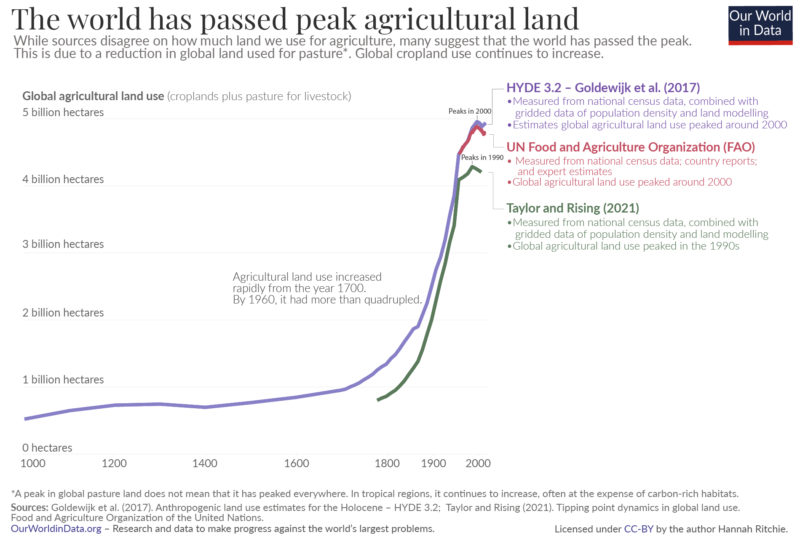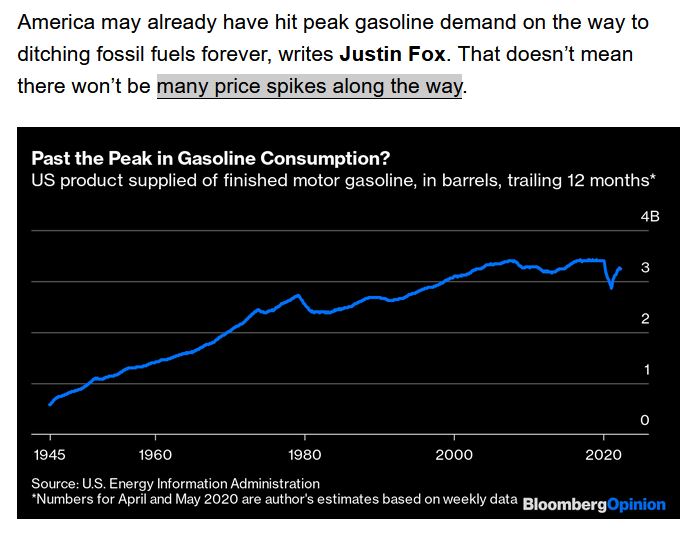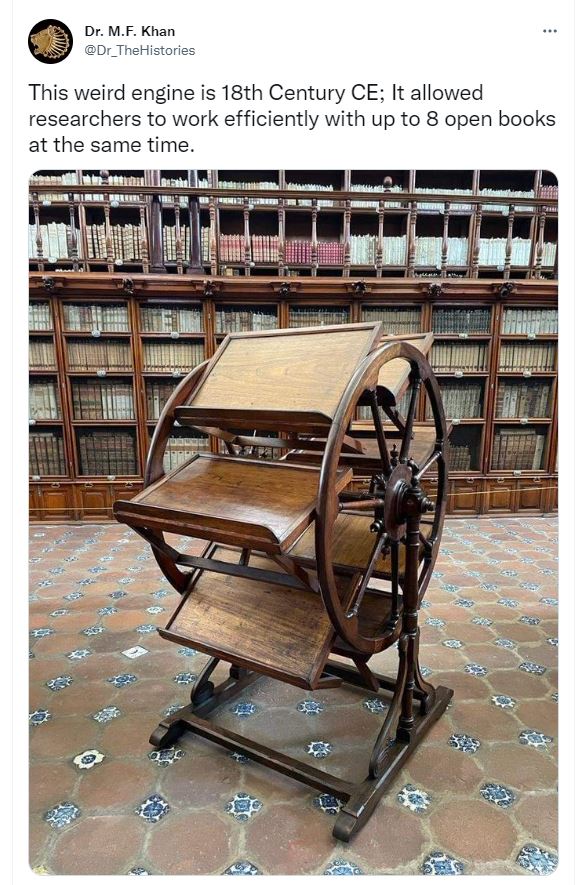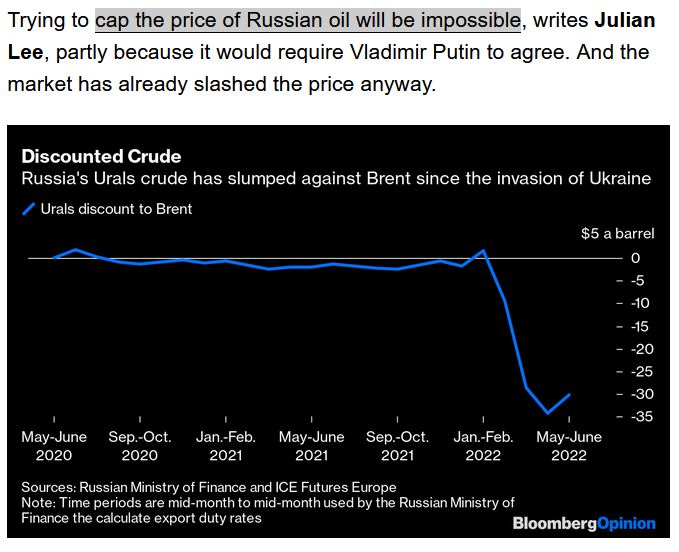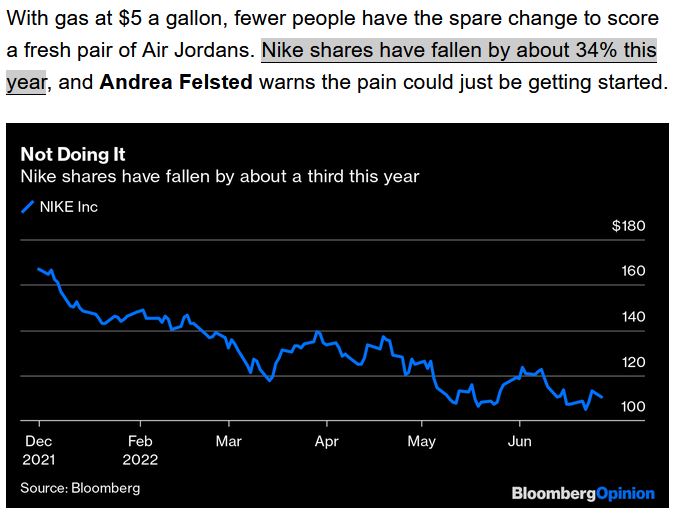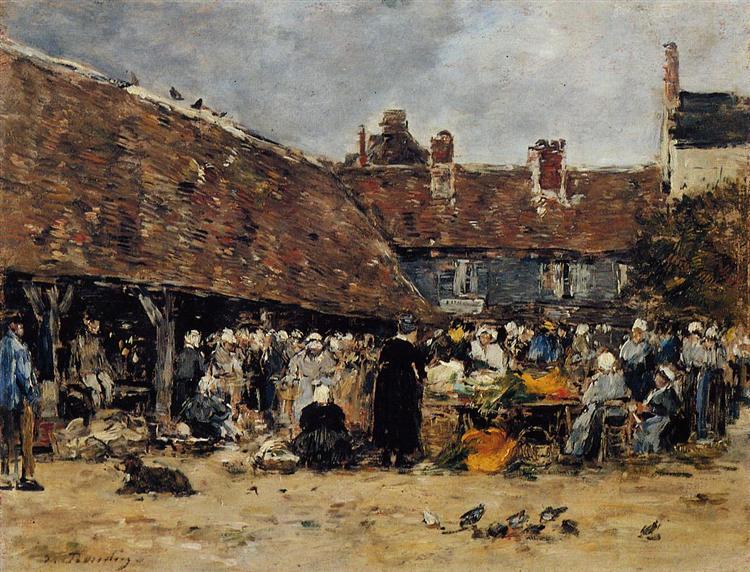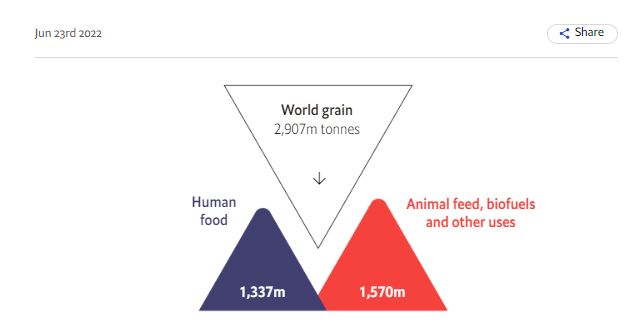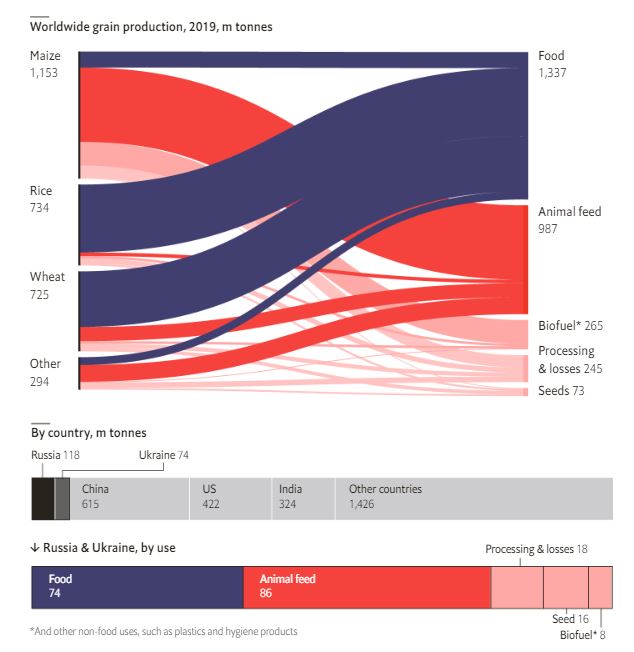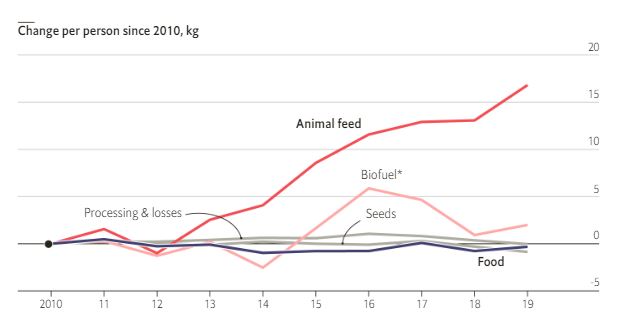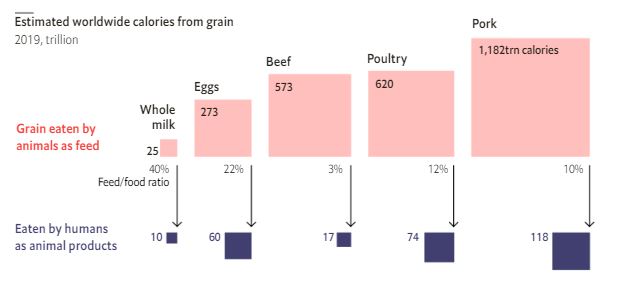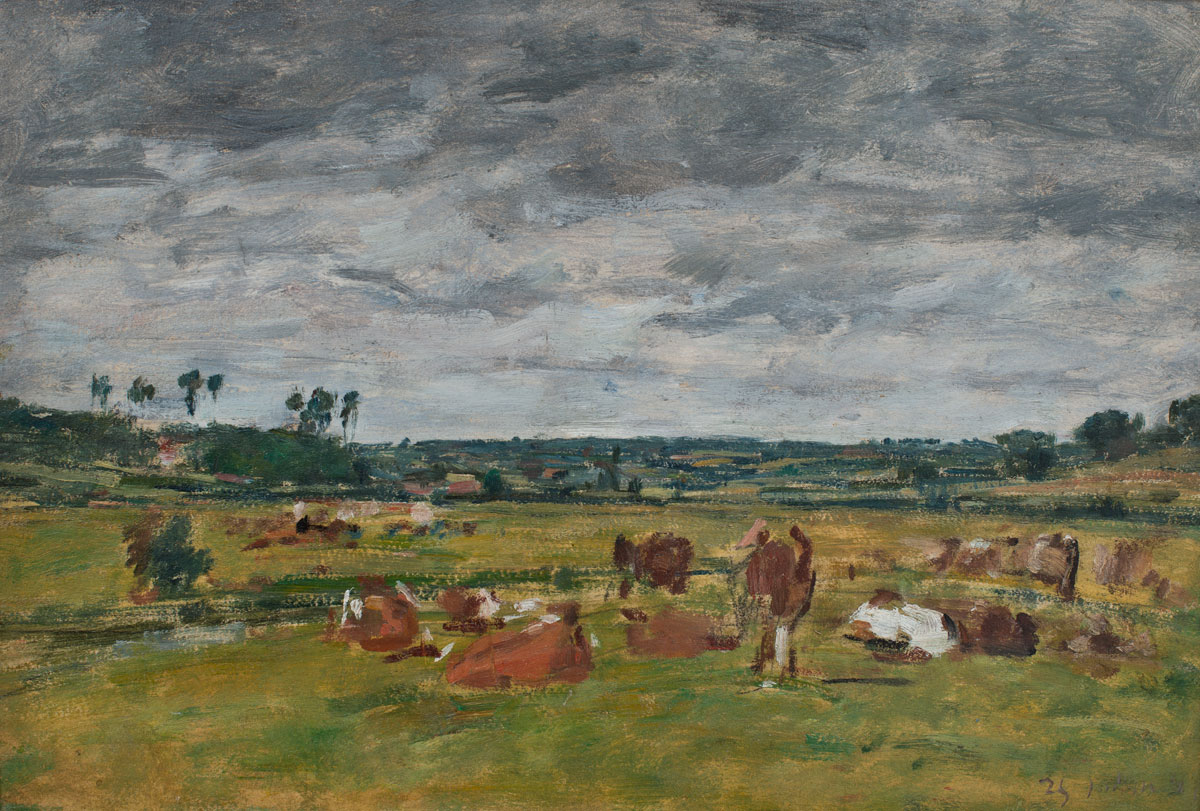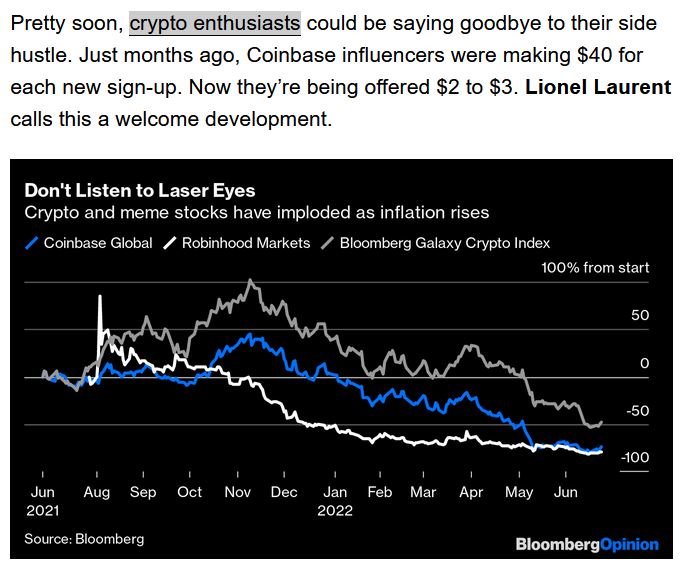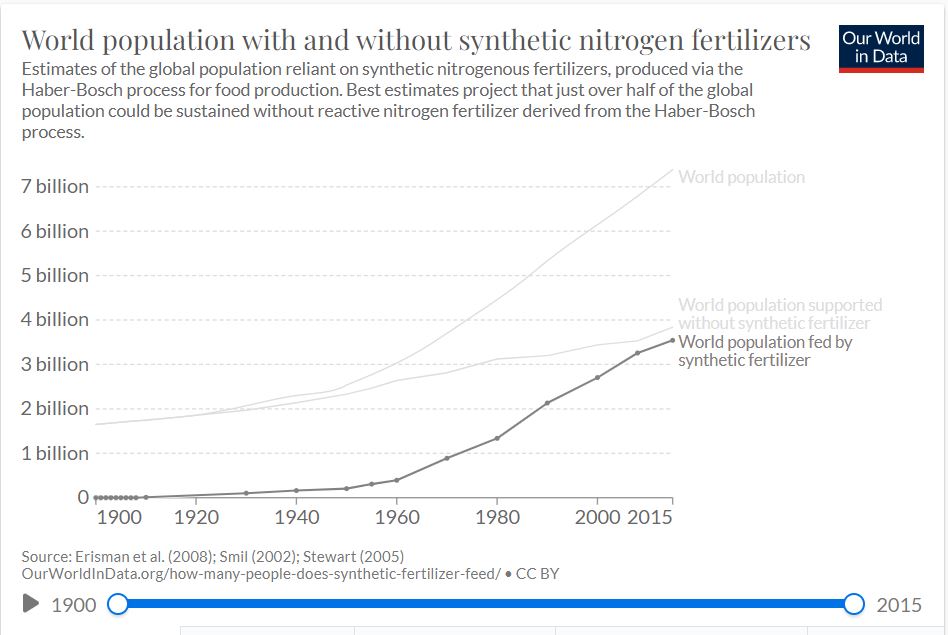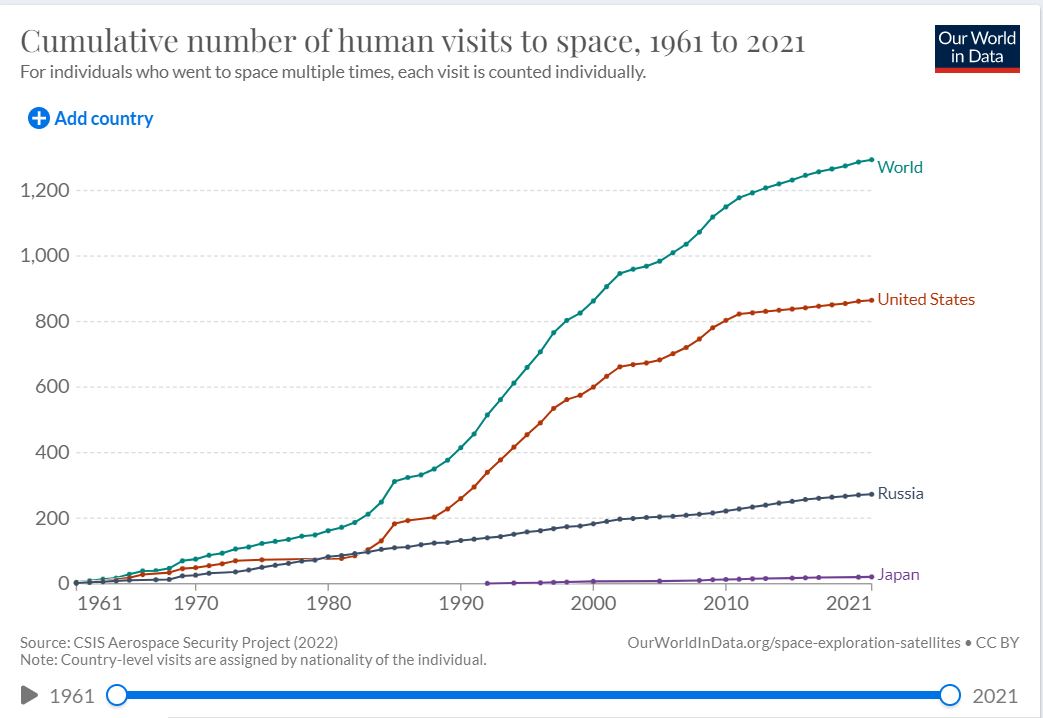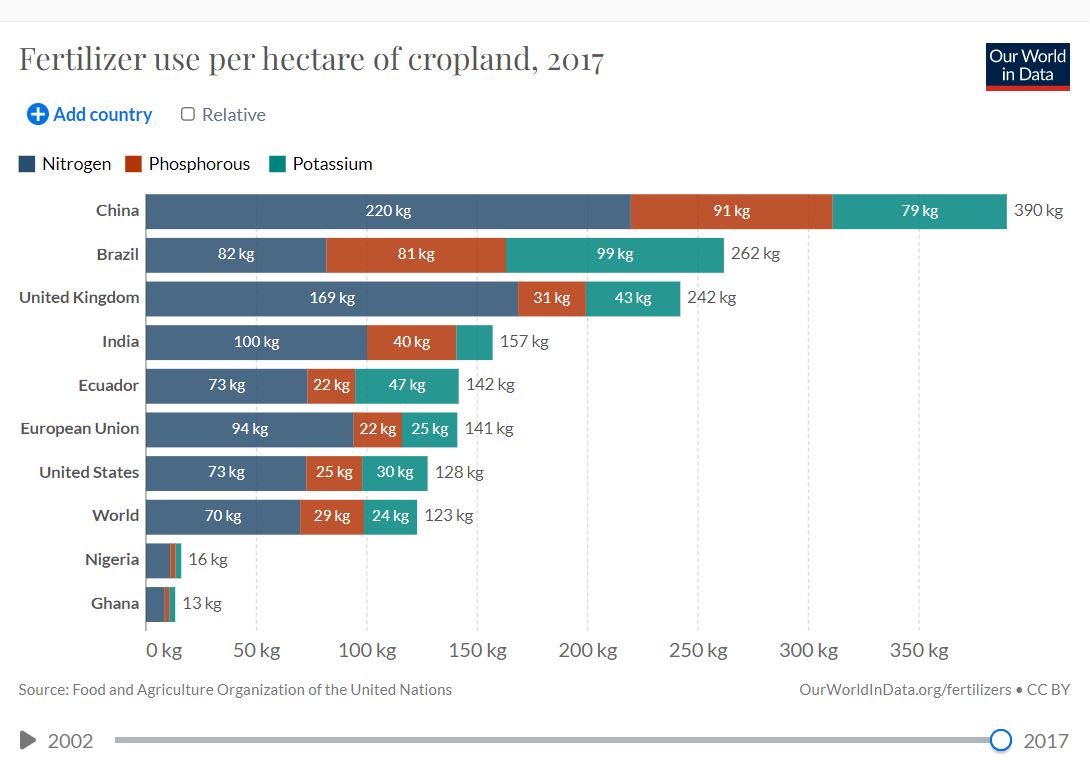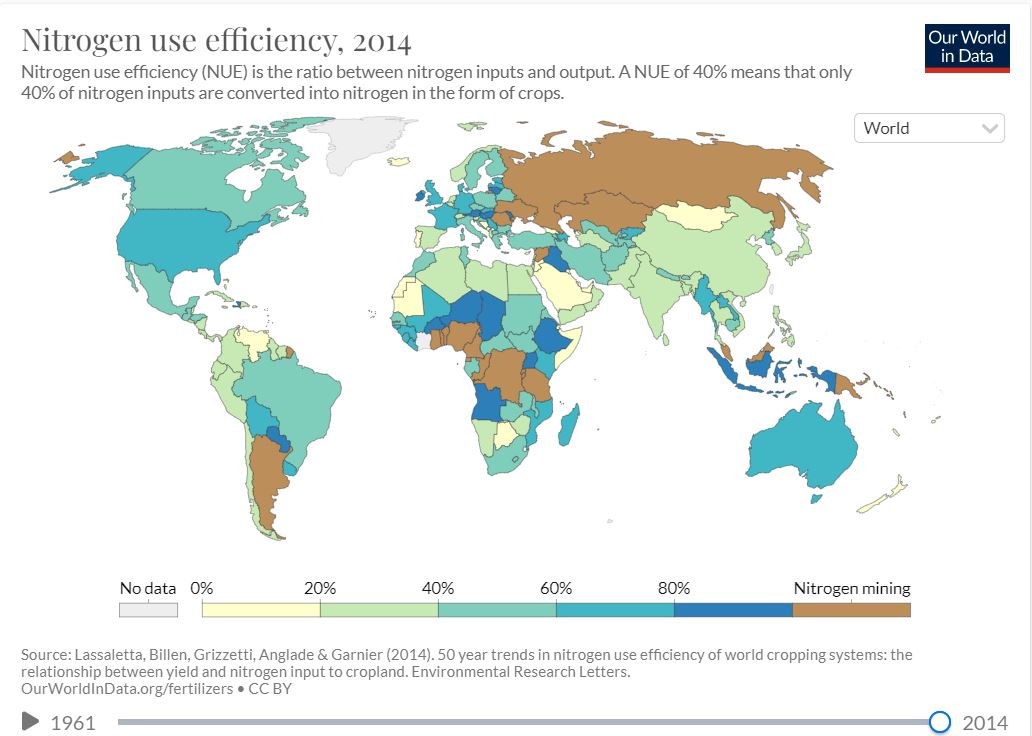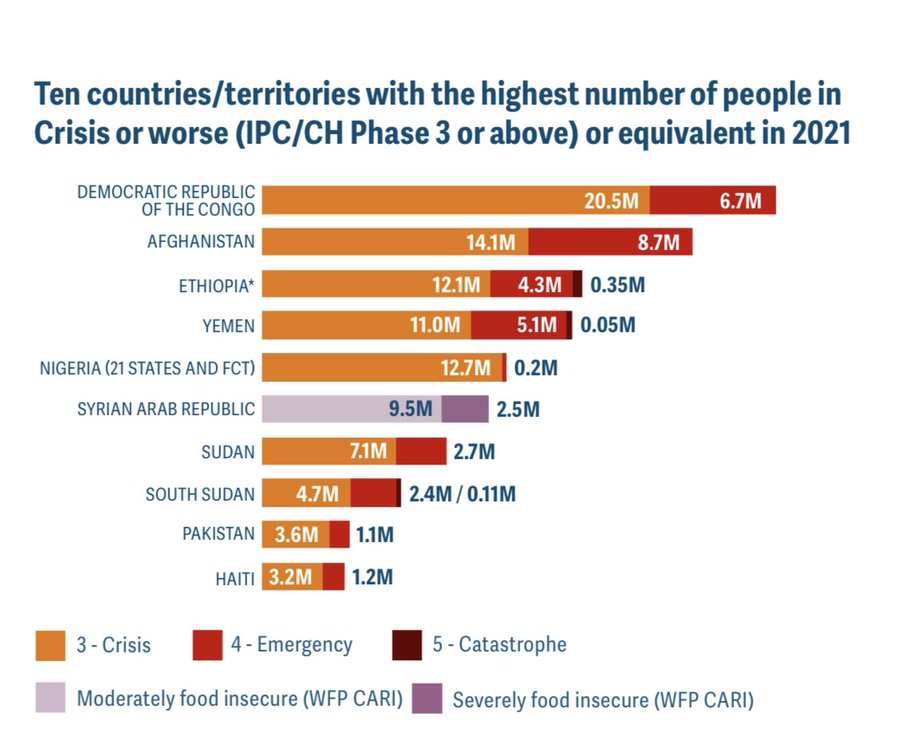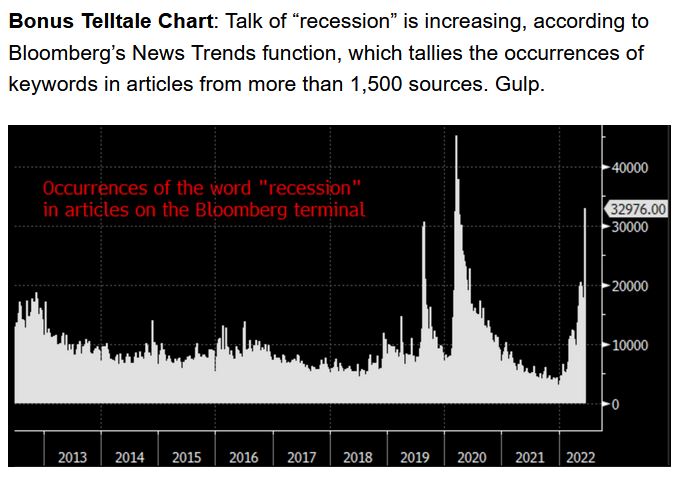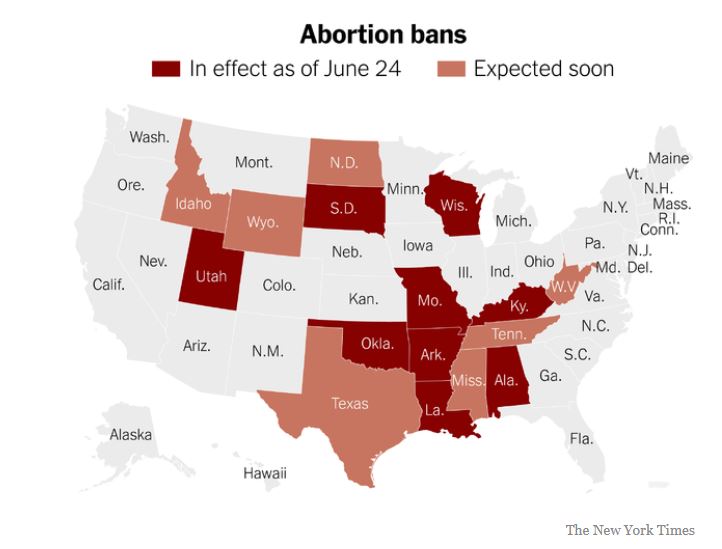|
You
can also view the message online
|
||||||||||||||||||||||||||||||||||||||||||||||||||||||||||||||||||||||||||||||||||||||||
 Châtenay-Malabry (FR - 92290), July 11, 2022 EFITA newsletter / 1047 - European Federation for Information Technology in Agriculture, Food and the Environment The informatique-agricole.org site offers you the possibility of subscribing the RSS feeds of its two newsletters See RSS feeds to implement to ensure that you continue to receive this newsletter To unsubscribe this newsletter, please contact me directely: guy.waksman(a)laposte.net if this link Unsubscribe does not work. 
To correspond with me (GW), please use this address: guy.waksman(a)laposte.net To subscribe the efita newsletter (please ask your friends and colleagues to test this link) Efita Newsletters subscription Before computers Weekly newsletters about ICT in Agriculture in English and French Both newsletters have around 14000 subscribers. >>> Last weekly EFITA Newsletters in English (created in 1999) Efita Newsletters >>> Last weekly AFIA Newsletters in French (created more than 20 years ago in 1997) Afia Newsletters >>> Statistics for the last efita newsletter >>> Last issue of the afia newsletter >>> Last available satistics for the afia newsletter Very interesting link to visit France, to keep, for the long winter (or summer!) evenings It takes weeks to visit all these villages, towns, and natural sites. A way to discover France in its incredible diversity: this site will undoubtedly please you, and in addition it is super well done. See the favorite villages, towns, sites... of French people Fenaison (Haymaking), c.1901 (Détail), par Camille Pissarro (1830-1903)
World FIRA 2023, the kick-off meeting of the Ag Robotics Forum 7 - 9 February 2023 Toulouse (FR) World FIRA 2023 will bring exhibitors and particiants in the fields, for an outdoor event! On the agenda: - Meeting with growers, investors, journalists, - In-field robot demos, - The 4th Scientific Workshop, - Panel Discussions & Pitches… See video See fira-agtech.com Welcome to the 14th European Conference on Precision Agriculture 2-6 July 2023, Bologna, Italy The 14th European Conference on Precision Agriculture will showcase the results of ongoing research and applications in precision agriculture. Organised under the auspices of the International Society of Precision Agriculture (ISPA), by the Department of Agricultural and Food Sciences of the University of Bologna, the ECPA sessions will present Precision Agriculture from the viewpoint of scientists, crop consultants, advisors, extension personnel, agronomists, producers, and other practitioners. 17th International Forum on Food System Dynamics (Igls Forum, supported by the European Association of Agricultural Economists, EAAE) February 13-17, 2023 in GARMISCH / Germany See fooddynamics.org Contact: Prof. Dr. Gerhard Schiefer, Intern. Center for Chain and Network Research, University of Bonn E-mail: fooddynamics(a)uni-bonn.de How Agricultural Robots Can Help Global Food Supply Shortages IDTechEx considers whether the Russia-Ukraine war will impact global food supply shortages, and how agricultural robots can play a part. See globalagtechinitiative.com Dutch Fruit Technology Companies, Michigan State University Collaborate on Precision Farming Research for Apple Cultivation Aurea Imaging, Munckhof Fruit Tech Innovators, and EFC have set up a project with MSU to explore precision tech for growing apple varieties in the U.S. See globalagtechinitiative.com Vertical Farming Startup Vision Greens Raises $7M to Improve Canada’s Food System Agtech innovator gears up for growing demand of its better tasting, sustainably grown greens. See globalagtechinitiative.com Fenaison ( Haymaking), c 1901 (Détail), par Camille Pissarro (1830-1903)
How did we see the future yesterday?? See the incredible collection developed by Alain Fraval Climate Solutions: The principles aim to promote industry credibility and ensure participants are given the ability to make informed decisions See globalagtechinitiative.com India: Cropin to Launch World’s First Agri Intelligence Cloud Agcloud provides traceability and compliance standards by constructing track interest solutions. See globalagtechinitiative.com Récolte à Éragny (détail), 1901, par Camille Pissarro (1830-1903) - National Gallery of Canada, Ottawa
FutureFarming.com > This is how Verdant Robotics plans to attract farmers The idea for Verdant Robotics arose while cofounder Curtis Garner was working for a large farming enterprise. They started off in apples until a large carrot grower ‘grabbed them by the nose’. >Steketee provides space to growth With the help of Steketee hoeing technology, LEMKEN creates space for crops, for farmers and contractors. For this purpose, we offer easy-to-use and intelligent technologies, with the best service and support – both before and after purchase. Because our driving force is your success! > Digital security: Threats from the cloud – equipment and cyber attacks Should firewalls, antivirus, and other digital security tools play a larger role in machinery marketing? Perhaps it’s just selection bias or a result of clever social media algorithms, but it seems like thefts of farm equipment are happening with higher-than-usual frequency. > Hoeing technology: Lemken equips hoeing implements with camera-steering Steketee, a Lemken brand, expands the application possibilities for common hoeing implements. The parallel sliding frame “EC-Steer” by Steketee offers farmers a simple option for upgrading their existing hoeing implements. > Crop solutions: Using satellites to prevent haystack fires Australian farmers could soon be using satellites to monitor the risks of haystack fires. A new Australian research project between Food Agility CRC, Charles Sturt University (CSU), IAG, and Myriota will review what data is most essential to understanding haystack degradation as a precursor to fires. > Interview: Agronomy to remain at the heart of Väderstad’s developments Agronomy, no autonomy (yet). That’s what Väderstad plans on doing. With shallower tillage, increased precision and sometimes even fewer seeds per hectare. While the trend on hoeing machines is also being followed, says Mattias Hovnert, responsible for sales and marketing. > Drones: Field Trials Podcast – Building more accurate analysis tools | Part 3 Machine learning and flying robots can combine to make some pretty effective field tools. In this last part of the podcast episode about drones, data and analysis tools, Mike Winn explains how his company DroneDeploy fits into different kinds of companies. > French grower Gauthier Thevenon: ‘Oz robot’s versatility delivers great benefits’ In 2021, French grower Gauthier Thevenon decided to invest in a weeding robot. He bought an “Oz” robot from French manufacturer Naïo Technologies. After a season and a half of working with Oz, he shares his experiences with us. > Get more fertilizer out of your slurry Active NS reduces odour emissions in the housing unit by 38% and ammonia emission by 45%. Slurry analyses document that the nutrient content of the slurry increases after just 30 days of adding Active NS. Result: 260 g more amm. N per tonne, 750 g more total N per tonne. Active NS offers financial benefits by improving the fertiliser value of the slurry. Active NS is produced and sold all over the world by activens.uk > Expert opinion: Can AI-driven agritech startups solve shortages in crop production? A fertilizer shortage is threatening the success of the world’s crops and could lead to widespread food shortages, experts say. In addition, labor shortages and an increasing need for advanced agritech tools are rampant. Evgeny Savin, co-founder of Green Growth explains how agritech startups can help. > Lidar: Blickfeld expands US operations LiDAR sensor technology company Blickfeld will open a new office in the Detroit area. A core focus of its expansion will be its software capabilities, including the company's volume measurement technology for agricultural use. > GMO Wheat: Plans for field tests with GMO wheat in Australia Argentina’s Bioceres Crop Solutions has confirmed its plans to carry out field tests with genetically modified drought resistant wheat in Australia. Chief Executive Federico Trucco told Reuters it is seeking planting approvals next year. > Cyber security: Threats from the cloud – equipment and cyber attacks Should firewalls, antivirus, and other digital security tools play a larger role in machinery marketing? Perhaps it’s just selection bias or a result of clever social media algorithms, but it seems like thefts of farm equipment are happening with higher-than-usual frequency. See FutureFarming.com La moisson (détail), 1883, par Camille Pissarro
The Push to Increase Ag Robotics Adoption on Farms With an abundance of new autonomous machines hitting the market each year, experts weigh in on the best approach to fund, deploy and scale-up these high-tech solutions. The market for agriculture robots is beginning to hit its stride. An influx of autonomous machines have moved beyond the prototype and testing phases, and potential customers are ready to see what the latest robots can help them accomplish on their farms. See agricultural-robotics.com Ekobot: New autonomous weeding experience A new machine is put at work on farms in Sweden and The Netherlands. It is weeding with three core components: By cameras (1) that are looking at the crop. The essential intelligence (2) that’s making the decisions. And an arm that will give the actual strike (3). The Ekobot robot is making use of existing electrical driving platform. Navigation is done with a combination of optical guidance and RTK GPS systems. See agricultural-robotics.com AgRobotics Land: the new brand for the agricultural robotics ecosystem in Southern France The south-east of Toulouse, in France, is the barycentre of the national ecosystem of agricultural robotics: among the 120 players listed on the AgRobotics-land.com website, more than fifty are part of the SICOVAL territory. Digital technology and robotics are among the first levers of innovation used by the members of the Agri Sud-Ouest Innovation competitiveness cluster. See agricultural-robotics.com Can we reduce fertilizer use without sacrificing food production? by Hannah Ritchie, September 09, 2021 Some countries need more fertilizers to increase crop yields. But some could cut back without sacrificing food production. Fertilizers can increase crop yields. This not only offers important benefits for farmer incomes and food security, but also produces environmental benefits by reducing our demands for farmland. Many countries would benefit from using more fertilizer. When they’re overapplied, they can also become an environmental pollutant. We might assume that there is nothing we can do: that to achieve higher yields we need more inputs and therefore necessarily cause more pollution. But the research shows that this is not necessarily true. Farmers in many countries can reduce fertilizer use without sacrificing food production. See ourworldindata.org Les Rameurs de Pois - par Camille Pissarro (1930 - 1903)
After millennia of agricultural expansion, the world has passed ‘peak agricultural land’, by Hannah Ritchie, May 30, 2022 (already mentioned but with another illustration) The world produces more food than ever, but the amount of land we use is now falling. This means we can feed more people while restoring wild habitat.
Around one-in-three children globally suffer from lead poisoning. What can we do to reduce this? Lead poisoning is still a big problem. Estimates suggest that around every third child in the world suffers from lead poisoning, which can hinder their cognitive and behavioral development. This can ramify to large negative impacts on society and the economy. Yet for such a large problem, lead poisoning receives very little attention or philanthropic spending — just $7 million per year. On top of that, we know that preventing lead poisoning is entirely possible — because we’ve already made a great deal of progress against it. In this article we discuss the burden of disease from lead poisoning, the progress we’ve made so far, and how we can continue to make progress.
Sector by sector: where do global greenhouse gas emissions come from? The world emits around 50 billion tonnes of greenhouse gases each year (measured in carbon dioxide equivalents). To prevent severe climate change we need to rapidly reduce these emissions. To figure out the largest levers to reduce emissions, and what emissions can and can’t be eliminated with current technologies, it’s crucial to first understand where our emissions come from. In this article from September 2020, we visualize the breakdown of global greenhouse gas emissions, sector by sector, and provide a short description of the activities in each sector that produce them.
Developing the Next Generation of Farmer-Approved Ag Robots (28/02/2022) In the “Farmers, draw me a robot” roundtable at World FIRA 2021, panelists shared their experiences with autonomous technologies, their biggest concerns, and what they’d most like to see from manufacturers and startups in the future. See agricultural-robotics.com SITIA’s hybrid autonomous robot tackles a multitude of common agricultural tasks across a wide range of crop types and growth systems. The agricultural sector’s labor struggles have been well-documented. As the rest of the world experiences these problems in the wake of a global pandemic, farmers have even fewer hands on deck. Many are turning to technology to help replace what has been lost. See agricultural-robotics.com See sitia.fr Past the Peak in Gasoline Consumption?
ZILUS box: Turn your ALPO electric tractor into a robot! by SABI AGRI, by Alexandre PREVAULT OSMANI - Co-founder & CEO SABI AGRI's ALPO electric tractor is already replacing combustion tractors on many farms. Thanks to its unique mechatronic architecture and ROS compliance, these electric tractors can be transformed into fully autonomous robots when connected to the ZILUS BOX. In this demo, we will introduce you to the ZILUS BOX and show you some of the features that such a robot can perform with the farmer or independently. See video Marc Kermisch, Global Chief Information and Technology Officer at CNH Industrial and FIRA USA panelist, explains why securing the world’s food supply chain begins and ends on the farm “The mission to feed the world is extremely altruistic. The perception of where our food comes from is gaining importance around the world. This gives us a chance to bring new people into the fold and prepare society for the automation that’s coming.” See agricultural-robotics.com European farmers rise up: Protests spread from Netherlands to Germany, Poland, Italy, The Counter Signal What started with the Dutch has spread to Germany, Poland, and now Italy as farmers collectively rise up to protest their governments’ destructive climate policies that threaten livelihoods and the global food supply. See thecountersignal.com To work efficiently with up to 8 open books at the same time: a top multimedia technology
Bushel’s new payments network is a major step towards digitizing US agriculture, AFN, by Jennifer Marston In a major step on the road to digitizing the ag supply chain, grain trading platform Bushel has launched a new software platform that facilitates digital payments between farmers and agribusiness partners. Payments in US agriculture are what Bushel CEO Jake Joraanstad calls “the last frontier for digitizing the industry,” with roughly 90% of them still done with paper checks. North Dakota-based Bushel hopes to digitize the process of moving money in the ag sector, fostering a faster, more reliable payment system. >>> How it works: - Bushel’s new product is “one offering that has three different functions and audiences,” Joraanstad tells AFN. - Bushel Payments facilitates the movement of money between farmers and agribusiness partners within the Bushel platform. For example, it’s how money travels from a facility purchasing grain to the farmer, or how a grower might pay for fertilizer. - The Bushel Wallet digital wallet is “where the farmer manages their connections to multiple bank accounts and sees their total balance,” says Joraanstad. Bushel says this is the first digital wallet ever created specifically for farmers and for the scale of agribusiness. Farmers can link up to six US bank accounts and instantaneously send or request payments within the Wallet network at any time. - Bushel Wallet Link is an API that allows any third-party agribusiness players to embed Bushel Payments into their own digital properties in order to move payments back and forth. - All three tools mean farmers can receive payments in their accounts directly, rather than wait for checks to arrive in the mail. - Bushel says the onboarding process to register and create a Bushel Wallet account takes less than three minutes. >>> Why it matters: …/… See agfundernews.com Low cost Russian oil?
X-Centric is bringing down the time & cost of on-site soil carbon analysis GROW accelerator, AFN, by Jack Ellis Yesterday we profiled Nubocha, one of 10 companies that are participating in this year’s GROW Impact Accelerator, the annual agrifoodtech startup program backed by AgFunder and GROW. Today, we move up the agrifood value chain from Nubocha’s plant-based, farmer-friendly ice cream to cutting-edge soil analysis technology. San Diego-based X-Centric Sciences is building a ‘point-and-shoot’ soil characterization system that can give farmers and agronomists an accurate soil carbon reading in the palm of their hand within seconds, rapidly accelerating the process. This could prove a game changer as agriculture becomes increasingly tied into emerging carbon markets. See agfundernews.com Nike down: Air Jordans shoes too expensive?
Africa saw 7.5x increase in agrifintech funding in 2021, Europe lags: report, AFN, by Lucy Ngige Africa’s ag fintech space received the least venture capital funding of any global region in 2021, with North America and India leading the world with respective totals of $650 million and $411 million. But the continent has shown a consistent increase in investment over the past few years, pointing to its growing importance of its ag fintech sector, according to a recent report from consultancy Graze. Agrifintech investment in Africa reached barely $1 million in 2019. This shot up to $10 million in 2020 and $75 million in 2021, the report states. The annual number of agrifintech deals also grew to 16 in 2021, up from three in 2019 and 2020. Generally, investors have remained apprehensive about agriculture as it is seen as a high-risk sector, Graze founder Niall Haughey tells AFN. He believes Africa’s recent upsurge in deals could be instrumental in putting agrifintech on investor’s radars, especially in countries where startups don’t have an investor community to pitch to. “It’s really positive that there’s been a lot more deal numbers, regardless of the dollars invested. I think that’s really good because it basically gets more investors looking at the sector,” he says. .../... See agfundernews.com Market at Trouville (1883), by Eugene Boudin
Virridy wants to tackle water insecurity in a world still dependent on irrigation for food, AFN, by Lucy Ngige Virridy is out to mitigate water insecurity using tech. The US startup provides Africa’s rural communities and Western US states with satellite-connected sensors for managing water, energy, and other agricultural resources. It recently announced the close of its $5.5 million Series A funding round, the proceeds of which it’ll use to accelerate development and adoption of its sensors. The round was led by Accord Capital, with participation from existing investors FHI 360, Cleo Capital, Reverent Rock, Save Earth, and VertueLab. >>> Why it matters: One in 10 people lack access to clean water, and 2 billion currently live with chronic high water stress. Climate change is exacerbating that scarcity, with negative effects in store for food production. The world is still heavily dependent on irrigation to grow crops. It is estimated that around 40% of global produce is sourced from irrigated agriculture, representing 20% of total cultivated land. >>> How it works: Virridy, formerly known as Sweetsense, was founded in 2010 to offer monitoring solutions for the effective management of environmental resources in remote and off-grid areas, starting out with arid regions in Kenya and Ethiopia. …/… See agfundernews.com Good Bye Cryptos?
Interview: Dr. Liza Dunn talks pesticides, biotechnology, maximum exposure limits, glyphosate .../... Pesticides are really critical for public health. They prevent us from ha having resurgences of diseases that were rampant in the middle ages. And so I like to kind of think that in the 20th century there were five public health advances that bought us a 30 year increase in life expectancy. And those five public health advances are water, sanitation, vaccination, antibiotics, food security, and vector control. And so agriculture. And food security is really the foundation of civilization. And from that everything else flows because if you have an abundant food supply, you are not relegating [00:07:00] ordinary people to subsistence farming. They can get off the farm and go to school and become, you know professionals and can build buildings. .../... See share.transistor.fm World population with and without synthetic nitrogen fertilizers - Our World in Data
Explore our new collection of charts on Space Exploration and Satellites Our new page on space exploration and satellites contains a collection of charts showing data on objects launched into space, human visits to space, the cost of space launches, the number of exoplanets and asteroids discovered, the largest impact craters, and more.
Perspective: Distorting the narrative about bee health hurts everyone, by Amanda Zaluckyj, The Farmer’s Daughter USA, May 20, 2022 Spring is the time of year when farms bloom into life as they emerge from winter hibernation (well, at least crop farms). Farmers take to their fields to plant the new crop, usually working long hours to get it all done. But they aren’t alone in those fields. As warmer weather returns, pollinators also emerge and get to their important work. Everyone knows that bees are important for their pollinating activities. There are over 250,000 plant species that rely on bees to mix and spread nectar and pollen for reproductive purposes. The result is the wide array of foods that we enjoy, including some staples of our diets, like apples, melons, broccoli, and almonds. According to the Food and Drug Administration, the bees’ service accounts for $15 billion in added crop value. And there’s also the things bees produce themselves: honey, pollen, royal jelly, beeswax, propolis, and venom. Humans harvest these items and have learned to use them for a variety of nutritional and medicinal purposes. The economic impact is also substantial. Honey bees produced 157 million pounds of honey in 2019 — that’s about $339 million worth! .../... See agdaily.com Fertilizer use per hectare of cropland, 2017 - Our World in Data
Fire Ants and Other Burning Problems: ARS Scientists Target Some of America’s Toughest Pests At any given point in time, there are about 13,475 million tons of fire ants in the United States. By comparison, a blue whale can weigh about 125 tons, meaning it would take a pod of about 107,800 blue whales to match the weight of all the fire ants here. Nearly a century ago, an unseen invasion began when a handful of non-native ants that had snuck aboard a freighter from South America arrived in Mobile, AL. The world of American insects would never be the same. Fire ants, as the invaders came to be known, have spread inexorably across the entire South, from sea to shining sea, and up the Eastern Seaboard as far as Virginia and into Maryland, wreaking havoc and leaving devastation in their wake. In a way, fire ants’ scientific name says it all: Solenopsis invicta — the unconquerable. They are omnivores, meaning they view just about everything as an item on a smorgasbord, and estimates put their cumulative economic damages at $8 billion, every year, for everything from crop losses to eating through communications and electrical system components. In addition to being prolific eaters, fire ants are exceptional breeders. They spread through mating flights that can involve millions of winged females and males that fly about 300 feet in the air and mate; afterward, each newly mated queen will attempt to create a new colony. These mating flights can expand the fire ant’s territory by 6-9 miles per year. However, early on they hitchhiked long distances on nursery stock by people, which prompted USDA to institute quarantine measures on movement of plants from infested to non-infested areas. .../... See tellus.ars.usda.gov Nitrogen use efficiency (NUE) is the ratio between nitrogen inputs and output. A NUE of 40% means that only 40 % of nitrogen inputs are converted in nitrogen in the form of crops - Our World in Data
China to adopt genetically modified maize and soy: why it matters for South Africa, by Wandile Sihlobo, June 20, 2022 Something important for global agriculture happened this past week but received minimal media coverage. The Chinese National Crop Variety Approval Committee released two standards that clear the path for cultivating genetically modified (GM) crops in the country. This has been the missing piece in the regulations for the commercial growing of genetically modified maize and soybeans in China. The government has two steps in these regulations. These are a “safety certificate” and a “variety approval” before crops can be commercially cultivated. Various genetically modified maize and soybean varieties have received the safety certificate since 2019. What’s been missing has been the “variety approval.” Now that hurdle has been cleared and commercialization of genetically modified crops in China is a real possibility. This message was also echoed by the Chinese Agriculture Ministry. It noted that “China plans to approve more genetically modified (GM) maize varieties.” Currently, China imports genetically modified maize and soybean but prohibits domestic cultivation of the crops. The change in regulations would potentially lead to an improvement in yields. This is aligned with China’s ambition of becoming self-sufficient in essential grains and oilseeds in the coming years. There are specific targets in products like pork, where the country wants to produce 95 percent of its consumption by 2025 .../... See allianceforscience.cornell.edu Rivage de Portrieux, Côtes-du-Nord, 1874, par Eugène Boudin, collection particulière
A shrinking fraction of the world’s major crops goes to feed the hungry, with more used for nonfood purposes …/… According to our analysis, 48 countries will not produce enough calories within their borders to feed their populations. Most of these countries are in sub-Saharan Africa, but they also include Asian nations such as Afghanistan and Pakistan and Caribbean countries such as Haiti. …/… See theconversation.com
Ukraine update: ordinary farming challenges in a most abnormal year, by Kornelis Kees Huizingajune, 23, 2022 The top exporters of Ukrainian wheat today are the Russians. That’s because they’ve stolen hundreds of thousands of tons of it from my fellow farmers. Now they’re attempting to sell it as their own, for about $100 million, according to the New York Times. The importers are mainly countries in Africa and Asia that are suffering from extreme drought and with increasingly hungry and vulnerable populations. In most cases they know what they’re buying but find themselves caught in a difficult situation as they struggle to access food and cooking oil for their populations. Count it as one more injustice in Vladimir Putin’s cruel war of conquest. .../... See globalfarmernetwork.org
Vilsack Announces Bioproduct Pilot Program Funded by Bipartisan Infrastructure Law, June 28, 2022 Today, Agriculture Secretary Tom Vilsack announced the U.S. Department of Agriculture is accepting applications for a new pilot program created under President Biden’s historic Bipartisan Infrastructure Law to support the development of biobased products that have lower carbon footprints and increase the use of renewable agricultural materials, creating new revenue streams for farmers. This $10 million investment is part of the Biden-Harris Administration’s ongoing work to rebuild our infrastructure and create good-paying jobs and economic opportunity in our rural communities. Secretary Vilsack visited Dan and Debbie’s Creamery, a family-owned operation in Ely, Iowa, and met to discuss what impact this bioproduct pilot program and resulting innovations will have on operations like theirs, as well as the customers they serve. Dan and Debbie’s Creamery farm is about 500 acres with a 120-head dairy operation. “Dan and Debbie represent the many American farmers, families and communities USDA is called to serve,” Vilsack said. “This pilot program is a critical part of USDA’s commitment to enhancing the circular economy and providing additional revenue streams for farmers. This program will help farmers take field residues and waste products and turn them into value-added products that create wealth and drive economic development in rural areas.” Under this program, the USDA National Institute of Food and Agriculture (NIFA) can award up to $10 million divided among the highest rated applications that include eligible universities and private-sector partners. The Bipartisan Infrastructure Law provided funds for sustainable bioproduct manufacturing for construction and consumer products. The statute directs USDA to partner with “not less than one institution” to study the benefits of using materials derived from a very broad definition of “covered agricultural commodities.” Complete information on this funding opportunity can be found on the NIFA website at: www.nifa.usda.gov/grants/funding-opportunities/bioproduct-pilot-program. An informational webinar for those interested in applying will be held on July 14, 2022, at 2:00 – 3:30 pm Central Time. To register, please visit the Bioproduct Pilot Program Informational Webinar page. This project will be implemented by a team of USDA experts from NIFA’s Institute of Bioenergy, Climate and Environment, USDA Rural Development’s BioPreferred Program and the U.S. Forest Service Wood Innovations Team and Forest Products Lab. See usda.gov Nuclear power for energy independence (Note: fast neutron reactors are not a really new technology!) “Reliance on [Russian oil] delayed a dignified, united condemnation of the invasion of Ukraine, and continues to interfere with the European Union’s response,” writes energy researcher Nicolas Mazzucchi. He argues that the EU must conquer its squeamishness about nuclear power and take advantage of practical, agile new nuclear technologies. For example, fast neutron reactors operate with enough energy to cause fission of many heavy atoms, potentially eliminating both nuclear waste material and reliance on uranium as the sole fuel source, he writes. See nature.com Do you talk about recession?
The Future of Energy Storage Beyond Lithium Ion: ESS Iron Flow Battery We have spent so much time digging into grid energy storage solution, and well this, might be the most promising solution we've come across. The ESS Iron Flow Battery requires no lithium, nickel, or cobalt. The only ingredients are water, salt, and iron. Flow batteries aren't perfect, and they aren't made for every application, but when it comes to grid energy storage, there's a LOT to love about the ESS Iron Flow Battery! See video See ESSinc.com Abortion right ban in US: an avoidable drama
Flow Batteries Are Here And They Will Change Everything A new technology is taking battery sustainability to a whole new level. As the world turns its back on fossil fuels, battery technology is becoming increasingly important. Unfortunately, our current batteries are far from ideal, particularly lithium-ion batteries. They have short lifespans, cost a bomb, have a substantial environmental impact, habitually catch on fire, and are difficult to recycle. But this is all set to change, as a new revolutionary battery is ready to take over. Welcome to the wonderful world of flow batteries. .../... Solar power is already the cheapest and one of the lowest carbon forms of energy we have. So redox flow batteries will take solar to another level of affordability and sustainability, which is fantastic because that is what we need to save the world from a climate disaster. We need every country to adopt highly sustainable energy as quickly as possible. With this technology, we can do that without bankrupting ourselves. So that is how and why redox flow batteries are set to take over the world. With advances like this, it makes you wonder why we are even bothering with fusion energy, as we already have the technology that could turn us into a carbon-neutral, planet-friendly, utopian society. We just need to start using it. See medium.com Portrieux (Saint-Quay-Portrieux), 1874, par Eugène Boudin (1824–1898), musée des Beaux-Arts de Budapest
The world’s food security is on the line, by Rotimi Williams, June 9, 2022 Everything is becoming more expensive, including the “poor man’s food.” That’s a popular term for yams, here in Nigeria and around the world. This humble root tuber is cheap to grow and buy, but it’s packed with vitamins and minerals. Pound for pound and nutrient for nutrient, it’s one of the best bargains in sustenance. People around the world depend on it. Over the last three months, however, I’ve watched the price of yams jump by 60 percent. They’re still a long way from becoming a “rich man’s food,” but it’s getting harder for low-income people to afford this important part of their diets. The rising cost of yams is another example of how Russia’s invasion of Ukraine has affected us all. .../... Ending the war between Russia and Ukraine will do a lot to improve food security. The world needs what they produce, from the agricultural inputs of fertilizer to agricultural outputs of wheat and sunflower oil. A return to normalcy will help everything, including the price of yams in Nigeria. Yet we must remember that there are other wars. Nigeria’s troubles aren’t as deadly as what we’ve seen this year in Ukraine, but the conflict is intense and ongoing. It harms food security. It doesn’t receive as much attention as it should in part because sub-Saharan Africa also struggles for recognition, even though more than a billion people live here. The rest of the world seems to assume that violence here is normal. We never should accept violence as normal, whether it’s the bombing of a steel factory in Mariupol or the slaughter of farmers in northern Nigeria. Farmers can work in difficult conditions. We can also work around them. But we have our limits—and every season, the world’s food security is on the line. See globalfarmernetwork.org Vache noire et blanche, ca. 1880-1888, Eugène Boudin (1824-1898), Musée d'art moderne André Malraux, Le Havre
Dutch emissions rules hamstring farmers & threaten food security Thousands of farmers in the Netherlands have been hitting the streets on their tractors to rally against new emission regulations from the Dutch government. Less than a century ago, food security was a priority for this European country, but now, officials may have forgotten those roots. With over 50,000 farmers and millions of animals occupying the Netherlands, many are now facing shutdowns. New regulations may force farmers to cut production and herd numbers by up to 30 percent to meet emission requirements by the state. The government is slated to cut nitrogen oxide and ammonia by 50 percent by 2030 and has already allocated €25 billion to assist in shifting farms to meet new requirements. The government in the past has called on farmers to use feed for their animals that contains less protein as a way of reducing ammonia emissions. See agdaily.com EPA releases revision to atrazine registration For months, the EPA has been toying with a vital tool for corn growers: Atrazine. Today, the agency announced a revision to the chemical's registration. See agdaily.com
Immoral business? A guy walks into a post office one day to see a middle-aged, balding man standing at the counter methodically placing "Love" stamps on bright pink envelopes with hearts all over them. He then takes out a perfume bottle and starts spraying scent all over them. His curiosity getting the better of him, and he goes up to the balding man and asks him what he is doing. The man says: "I'm sending out 1,000 Valentine cards signed, 'Guess who?'" "But why?" asks the first man. "I'm a divorce lawyer." The distribution of this efita newsletter is sponsored by vitisphere.com Please, contribute to the content of your efita newsletter, and advertise your events, new publications, new products and new project in this newsletter. Without your support, it will not survive! Contact: Guy WAKSMAN E-mail: guy.waksman(a)laposte.net To read this newsletter on our web site See Efita The archives of this newsletter See Efita Do not miss the Virus Jokes in English and French About the EFITA mailing list You can use the efita moderated list (> 15000 subscribers) to announce any event / product / web site / joke (!) related to IT in agriculture, environment, food industry and rural areas. If you want to subscribe a friend, please fill in his form. If you do not wish to receive our messages, please fill in the following form... |







